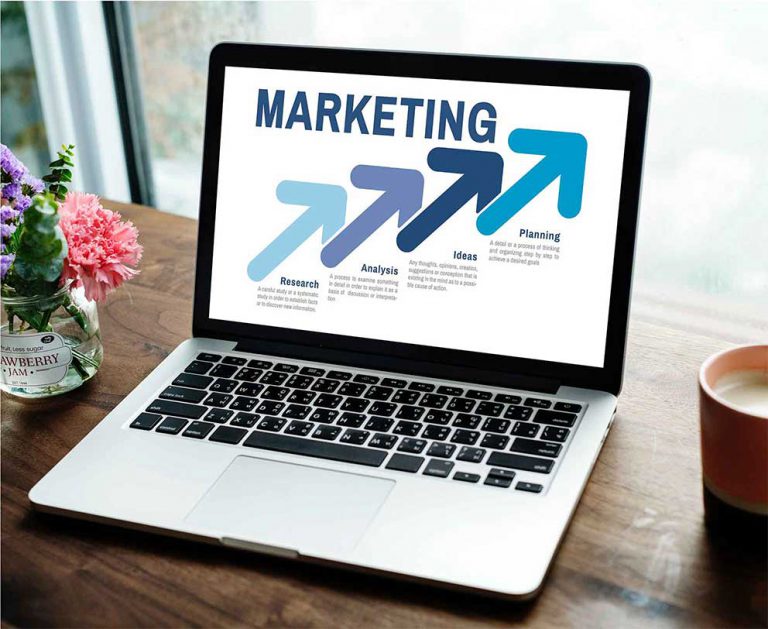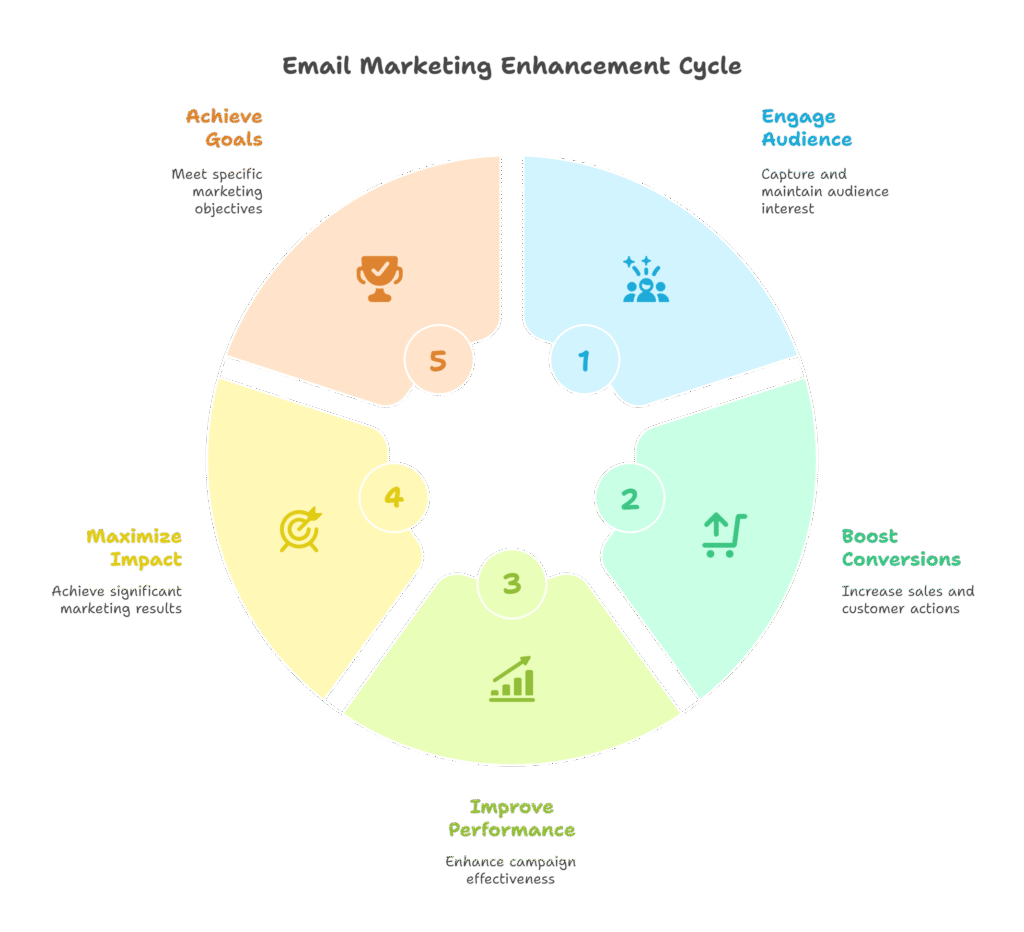
7 Things To Do With Your Email Marketing
You’ve meticulously built your email list. You send out a newsletter every week or so, sharing updates and promotions. But are you truly leveraging the power of that list?
If your email strategy feels like you’re just ‘checking a box,’ you’re leaving significant revenue and valuable customer relationships on the table. With an average return of $36 for every $1 spent, email remains the king of marketing ROI, but only if it’s used to its full potential.
It’s time to move beyond the basic broadcast. In this article, we’ll detail seven powerful email campaign ideas – from sophisticated automation to simple, yet effective, personalization tactics – that will transform your email marketing strategy, deepen customer loyalty, and drive measurable growth for your business.

Go Beyond the Broadcast with Smart Segmentation
What It Is & Why It Matters: At its core, email list segmentation is the practice of dividing your subscribers into smaller, targeted groups based on specific criteria.
Sending the exact same message to your entire list guarantees that it will be irrelevant to a large portion of them. Segmentation is the foundation for sending more relevant content, which is the single most effective way to improve email engagement.
How to Get Started: You don’t need complex tools to begin. Start by creating simple, powerful segments right within your existing email service provider:
- New Subscribers: Group those who signed up in the last 30 days to give them a special onboarding experience.
- Repeat Customers: Subscribers who have made more than one purchase are your biggest fans. Treat them like VIPs.
- Inactive Subscribers: Create a segment of people who haven’t opened or clicked an email in the last 90 days. We’ll address what to do with them shortly.
Automate a Powerful First Impression with a Welcome Series
The Problem with a Single Welcome Email: While a single “thank you for subscribing” email is good, a multi-part welcome email series is far more effective for building a relationship from day one. This is your chance to make a lasting impression while a new subscriber’s interest is at its peak.
The 3-Email Welcome Blueprint: With welcome emails boasting an average open rate of over 80%, this series is prime real estate for engagement. This is a perfect task for email automation.
- Email 1 (Sent Immediately): Deliver the promised lead magnet or discount code instantly. Warmly welcome them to the community and clearly state what kind of value they can expect from your future emails.
- Email 2 (2 Days Later): Share your brand’s origin story or introduce the people behind the business. This builds a human connection and shows subscribers who they’re supporting.
- Email 3 (4 Days Later): Guide them towards action. Showcase your most popular products, link to your cornerstone blog content, or share a valuable resource that helps them solve a problem.
Recover Lost Sales with an Abandoned Cart Sequence
The High Cost of Abandoned Carts: Industry data shows that nearly 70% of all online shopping carts are abandoned before a purchase is completed. Think of this not as a lost sale, but as a huge opportunity. By setting up a series of automated customer lifecycle emails, you can recover a significant portion of this potential revenue.
Crafting an Effective Recovery Flow:
- Email 1 (1-3 Hours After Abandonment): Send a friendly, low-pressure reminder. A subject line like “Did you forget something?” works wonders. Be sure to include an image of the items they left behind.
- Email 2 (24 Hours Later): Address potential barriers. This email can build confidence by including customer reviews, links to your FAQ page, or a prompt to reply with any questions.
- Email 3 (48 Hours Later): Create a sense of urgency. Offer a small, time-sensitive discount (“Complete your order in the next 24 hours for 10% off”) to encourage immediate action.
Win Back Subscribers with a Re-Engagement Campaign
Why You Can’t Ignore Inactive Subscribers: A large list filled with unengaged subscribers isn’t a vanity metric; it’s a liability. It can harm your email deliverability (your ability to land in the inbox) and skews your engagement metrics, making it harder to know what’s actually working. A re-engagement campaign aims to wake them up or cleanly remove them from your active list.
A Simple “Win-Back or Goodbye” Campaign: Send an email with a compelling subject line like “Is this goodbye?” or “We miss having you around.” In the body, remind them of the value you offer (e.g., “You’re missing out on our weekly marketing tips”). Then, provide two crystal-clear options: a button to stay subscribed (perhaps tied to an incentive) and an easy-to-find unsubscribe link.
Master Deeper Email Personalization
Moving Beyond the First Name: True email personalization goes far beyond just using the [FNAME] tag in your greeting. It’s about using the behavioral and transactional data your customers share with you to deliver uniquely relevant content that makes them feel seen.
Using Behavior to Personalize: If a customer has previously purchased hiking boots, use this data to send them a targeted email about your new line of all-weather socks or a guide to the best local hiking trails. This small act of tailored content shows you’re paying attention to their specific interests and transforms your marketing from a generic blast into a helpful conversation.
Get Smarter with Every Send Through A/B Testing
The Golden Rule of A/B Testing: The concept behind A/B testing emails is simple: send two variations of an email to a small portion of your audience to see which one performs better. You then send the “winning” version to the rest of your list. The golden rule is to test only one variable at a time so you know exactly what caused the change in performance.
What You Should Be Testing:
- Subject Lines: Try a question (“Ready for summer?”) versus a statement (“Our summer collection is here”).
- Call-to-Action (CTA) Button: Test the text, for example, “Shop Now” vs. “Explore the Collection”.
- Sender Name: Does “The Team at Your Company” perform better or worse than “Jane from Your Company”?
Ask for Feedback and Reviews to Build Social Proof
Turning Monologue into Dialogue: Your email list is a direct line to your best customers, making it the perfect channel to create a valuable feedback loop. This is a critical, yet often overlooked, part of managing your customer lifecycle emails.
How to Automate the Ask: You can easily set up an email automation to trigger 10-14 days after a product has been delivered. The email should be simple and direct: “Hi [FNAME], how are you enjoying your [Product Name]? Would you be willing to share your thoughts by leaving a review?
Your feedback helps other customers like you.” Crucially, provide a direct link to the product review page to make the process as frictionless as possible.
Final Thoughts
By moving beyond the standard newsletter to embrace segmentation, welcome series, cart abandonment flows, re-engagement campaigns, deep personalization, A/B testing, and feedback requests, you transform your email from a simple broadcast tool into a dynamic engine for growth.
A powerful email appending strategy doesn’t just talk at your audience; it builds a community, solves problems, and guides customers through their journey with your brand, ultimately leading to better relationships and a stronger bottom line.
Your task for this week is to choose just ONE of these seven strategies to implement. Don’t feel pressured to do everything at once. Whether it’s drafting a two-email welcome series or setting up your first subject line A/B test, taking that single, focused step is the key to unlocking the incredible potential sitting in your email list.